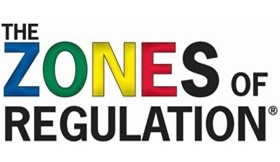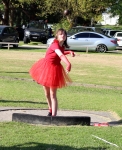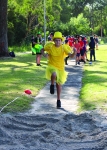Zones of Regulation
Zones of Regulation
By Leah M. Kuypers. Book available from www.socialthinking.com.au

Who Can Benefit?
The Zones of Regulation™ strategies can be used with early childhood to high school age students in mainstream classes and to all levels of students with special educational needs. The Zones program is geared toward students who struggle with self-regulation, including anger management, sensory processing, anxiety, flexibility, or self-control.
What is self-regulation?
Self-regulation is the ability to adjust the display of emotions through behaviour to attain goals in socially acceptable ways. This includes regulating sensory needs, emotions, and impulses to meet the demands of the environment, reach goals, and behave in a socially appropriate way. To successfully self-regulate, three components need to be integrated: sensory processing, executive functioning, and emotional regulation.
- Sensory Processing: How you make sense of the information perceived by your sensory receptors, and how you organise that information to act upon it in a purposeful way.
- Executive Functioning: The cognitive processes involved in the conscious control of thoughts and actions. The ability to self–regulate depends on the effectiveness of numerous mental operations, including attending to two or more activities simultaneously, flexible thinking, organising actions, and impulse control.
- Emotional Regulation: Processes that are responsible for controlling emotional reactions in order to meet goals. This includes monitoring, evaluating, and modifying the intensity and timing of emotional responses.
What does “The Zones of Regulation™” teach?
The Zones of Regulation™ curriculum includes learning activities to help students recognise when they are in the different zones (states of arousal). Calming techniques, thinking strategies and sensory strategies are explored, enabling students to develop a toolbox of strategies from which they can choose to help self-regulate.
Students gain an increased vocabulary of emotional terms, skills in reading facial expressions, perspective on how others see and react to their behaviour, insight about events that trigger their behaviour, and problem-solving skills. Executive functioning skills are addressed in order to increase flexible thinking, awareness of impulse control, and understanding the big picture.
What are The Zones of Regulation?
The Zones of Regulation categorises states of alertness and emotions into four coloured zones:
- The Blue Zone: Low states of alertness, such as sad, sick, tired or bored. The body and/or brain is moving slowly or sluggishly.
- The Green Zone: A regulated, in control state of alertness that students generally need to be in for schoolwork and being social.
- The Yellow Zone: A heightened state of alertness. A person may be experiencing stress, anxiety, frustration or excitement, and become wiggly, squirmy or sensory seeking. The Yellow Zone is starting to lose control.
- The Red Zone: Extremely heightened states of alertness or very intense feelings, such as anger, rage, panic or elation. Being in the Red Zone is best explained as not being in control of one’s body.
Everyone experiences all of the Zones- the Red and Yellow Zones are not the “bad” or “naughty” zones. All the zones are expected at one time or another.






